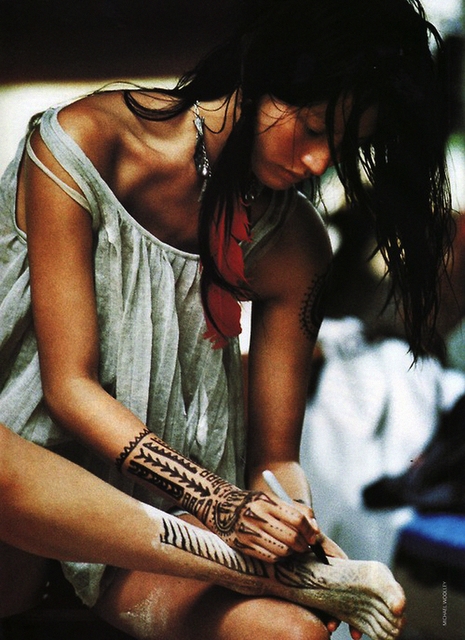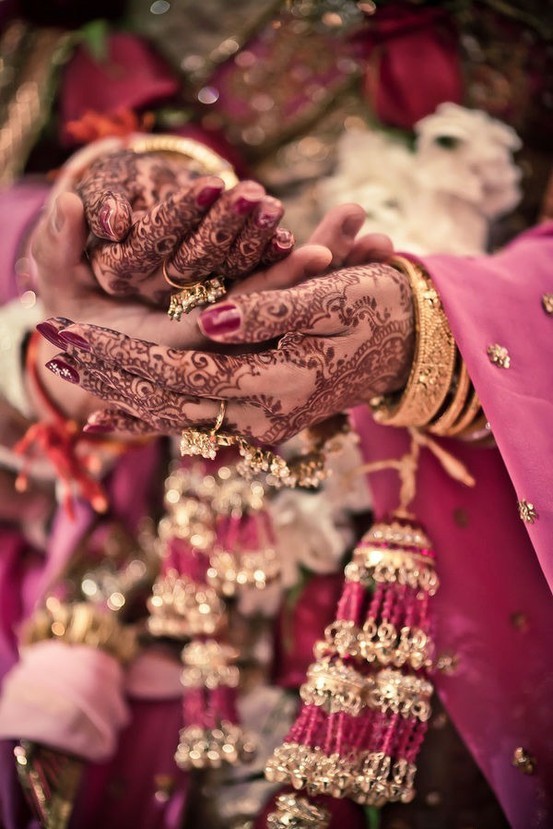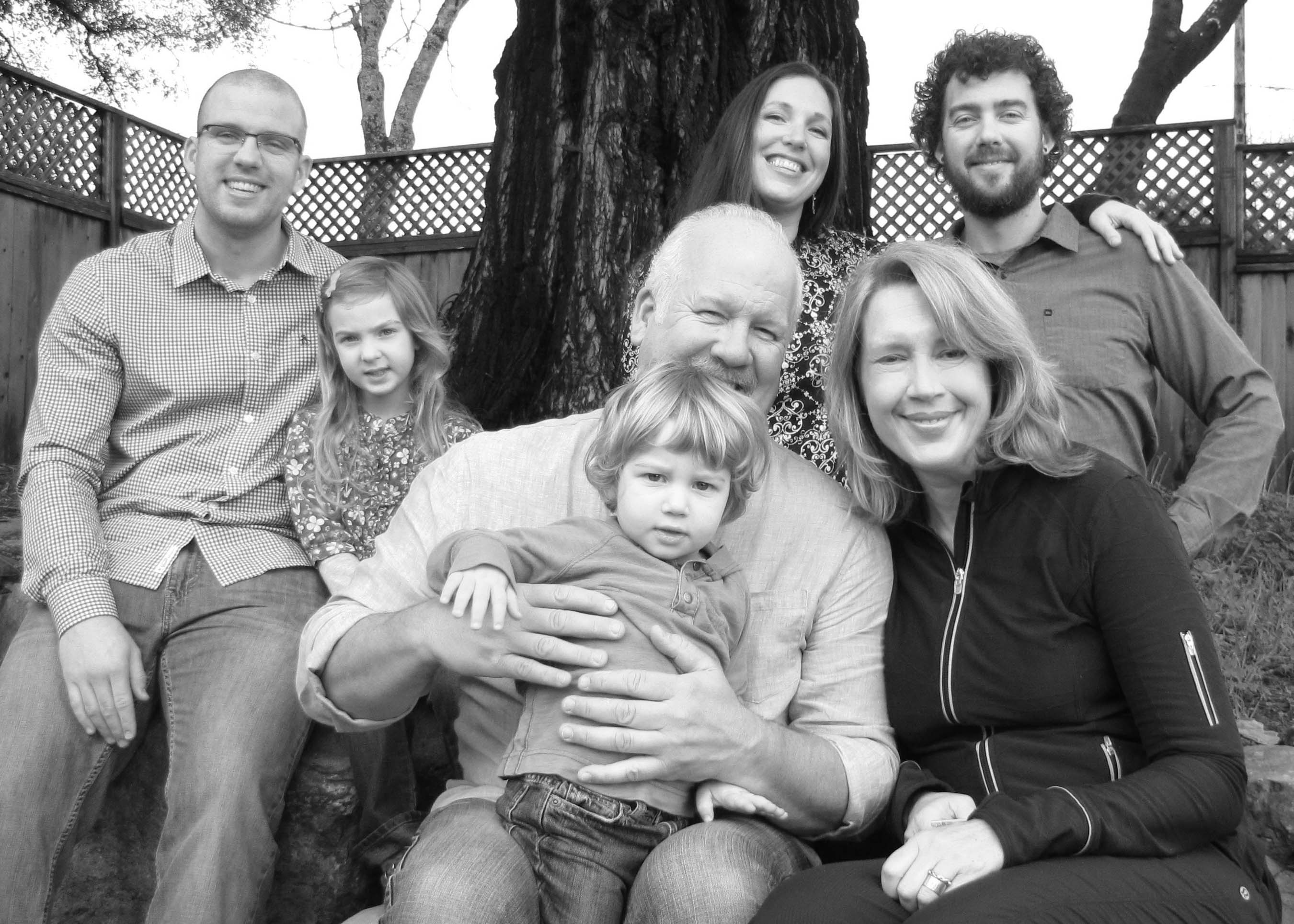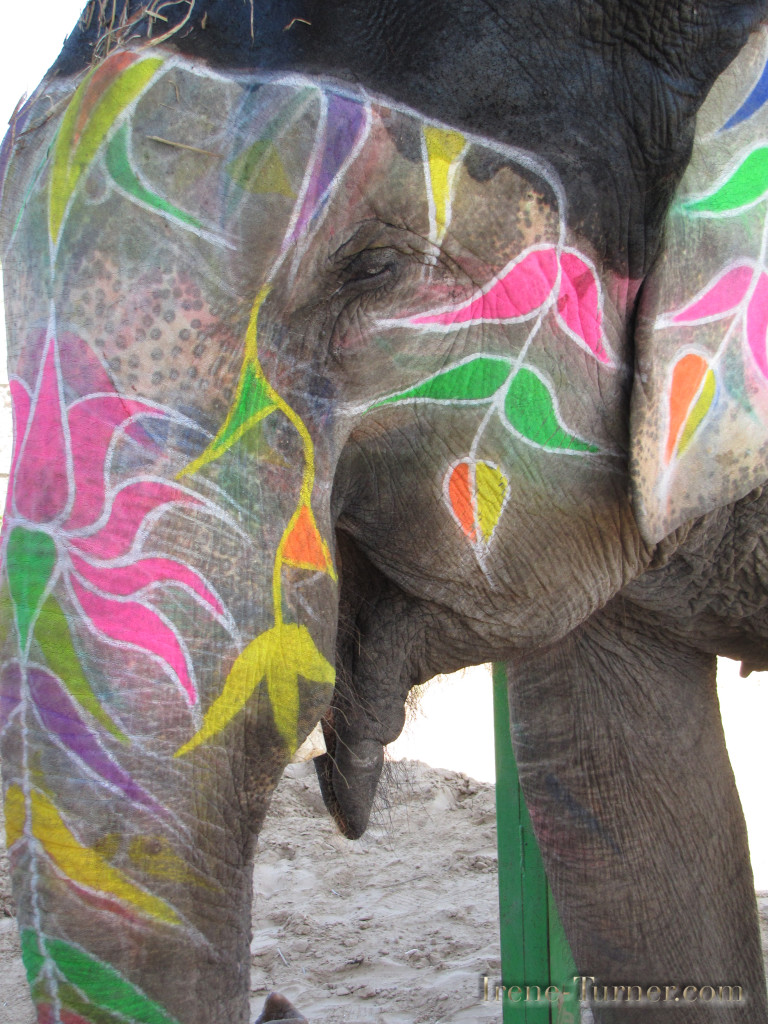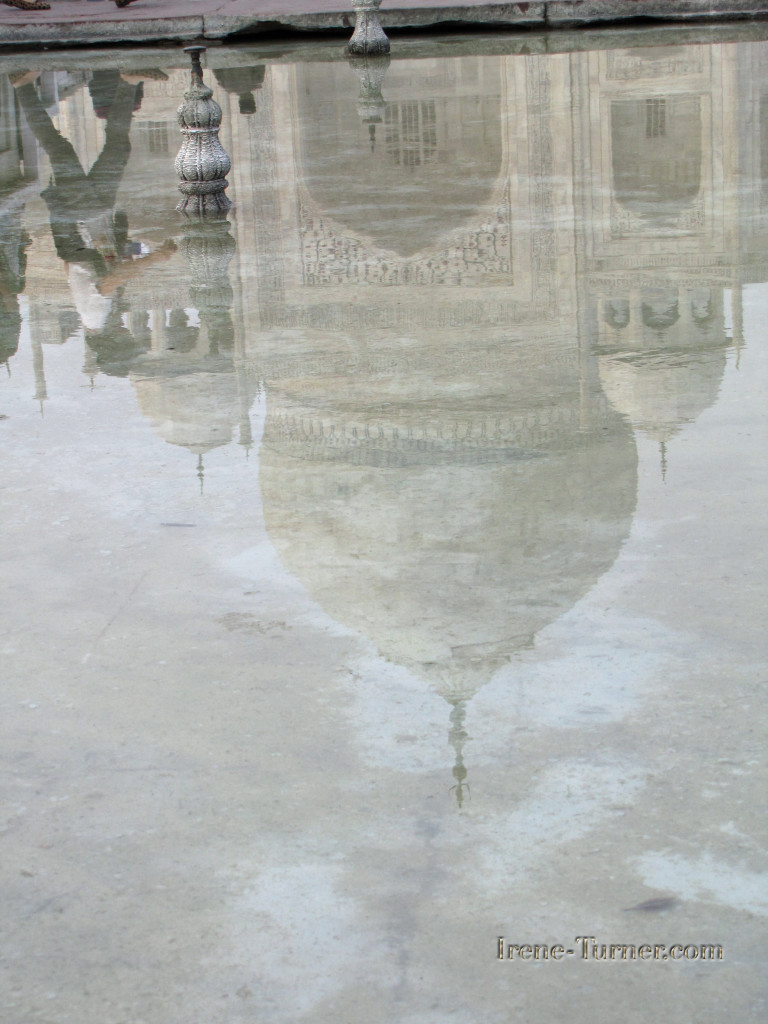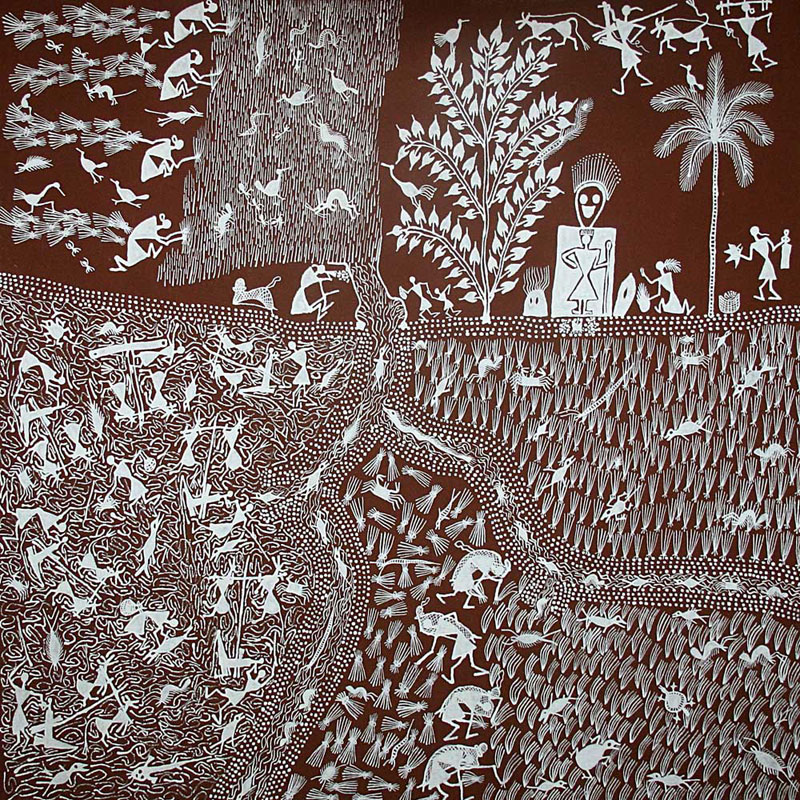Using henna for body art is relatively new to the Western world, but gaining in popularity right along with the popularity of permanent tattoos. And, while I am not a tattoo lover (because what I loved at 20 is not so appealing to me in my 50’s), the idea of beautiful body art that is temporary is interesting.
According to historians, henna has been used for body art for thousands of years. It is said that the ancient Egyptians used henna to decorate the bodies of the dead for their journey to the afterlife. There are even mentions of henna in the bible. Today henna tattoos are an important part of many customs in the Eastern world, especially in Africa, India and Arab countries, where henna is used for many holidays, weddings, and other rites of passage. Henna has been used to adorn young women’s bodies as part of social and holiday celebrations since the late Bronze Age in the eastern Mediterranean, and has moved around the world.
- Henna body art is said to have been brought to India in the 12th century by the Moguls who used to trade with the Ancient Indians and is traditionally used in the Indian culture in ceremonies related to marriage.
- In the Middle East it customary for Arabs not to present their hands for henna if they are lying about something, and like in India, it is usually body paint for brides.
- African henna body art designs have a distinct geometrical element to them, and they are less decorative and ornate than the Indian mehndi henna body paint tattoos.
- Japanese and Chinese henna symbols are growing in popularity in Western countries. Japanese symbols are some of the most popular designs requested for henna body painting.
- In countries like Turkey, Iraq, and Saudi Arabia henna is a symbol of good luck.
- People in Morocco use henna body painting for many different things – pregnant women use henna designs on their ankles to protect them through childbirth; these designs remain family specific and are passed down through generations.
Henna is a flowering plant that is used to dye skin, hair, fingernails, leather and wool. Henna, or Mehndi, is a body dye paste created by grinding the leaves and twigs of the Henna plant and hot water. Various herbs and dyes can be added to the paste to alter it slightly. You can find the henna plant, or hawsonia plant, in the Middle East and North Africa. For skin dyeing, a paste of ground henna (either prepared from a dried powder or from fresh ground leaves) is placed in contact with the skin from a few hours to overnight. Henna stains can last a few days to a month depending on the quality of the paste, individual skin type, and how long the paste is allowed to stay on the skin. Henna was regarded as having “Barakah,” blessings, and was applied for luck as well as joy and beauty. Brides typically had the most henna, and the most complex patterns, to support their greatest joy, and wishes for luck. Some bridal traditions were very complex, such as those in Yemen, where the Jewish bridal henna process took four or five days to complete, with multiple applications and resist work. Can’t you just see some of these beautiful patterns on your walls or on fabric in your home? With the re-emergence of wall paper and the boho/globe trotting trend in home decor I believe we will see more of this beautiful art in our homes as well.
To see more of these beautiful patterns check out the video below. What do you think, could you see this art in your home?
Comments
7 Comments
-
Beautiful post. It was helpful reading about how this form of temporary skin art is revered in areas of the world such as Turkey and Saudi Arabia. Thanks for posting this.
Pingbacks
-
[…] Handmade Silver Jewelry of embellishment – lovebeads2011-2012.netFashionable Handmade Silver Jewelry Makes A ComebackHandmade Silver JewelryDichroic Glass Jewelry, Dichroic Glass PendantsConsider handmade jewelry if she likes crafty thingsSomething More Important – YouStart's ArtsHandmade Artists BlogSterling Renaissance Festival 2012Creative Freedom with NEW Art Clay Silver 650Henna Body Art-via Santa Rosa Interior Design […]
Trackbacks
-
Awesome website…
[…]the time to read or visit the content or sites we have linked to below the[…]……
-
Websites worth visiting…
[…]here are some links to sites that we link to because we think they are worth visiting[…]……
-
Awesome website…
[…]the time to read or visit the content or sites we have linked to below the[…]……
-
Visitor recommendations…
[…]one of our visitors recently recommended the following website[…]……
-
Read was interesting, stay in touch……
[…]please visit the sites we follow, including this one, as it represents our picks from the web[…]……


